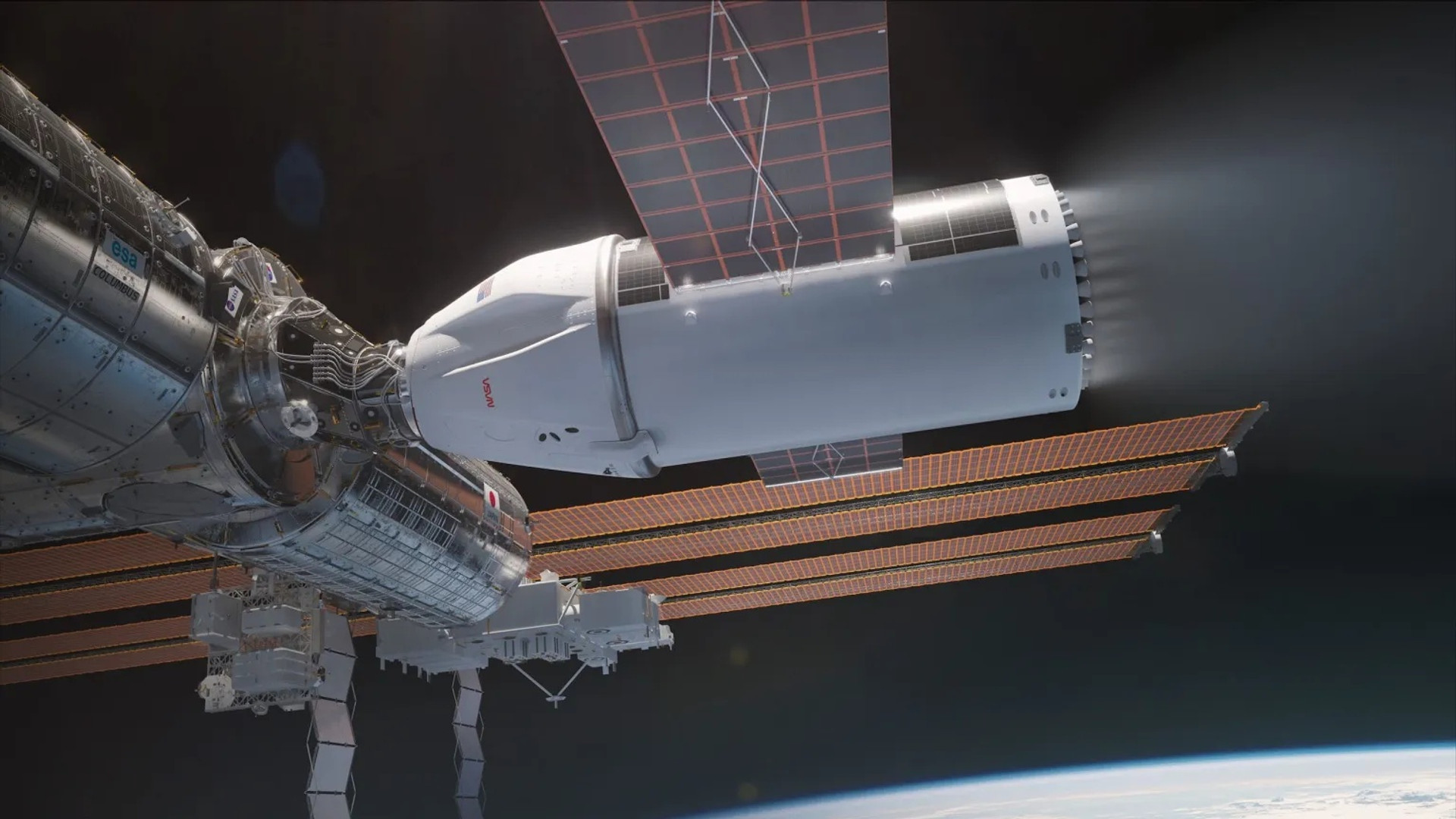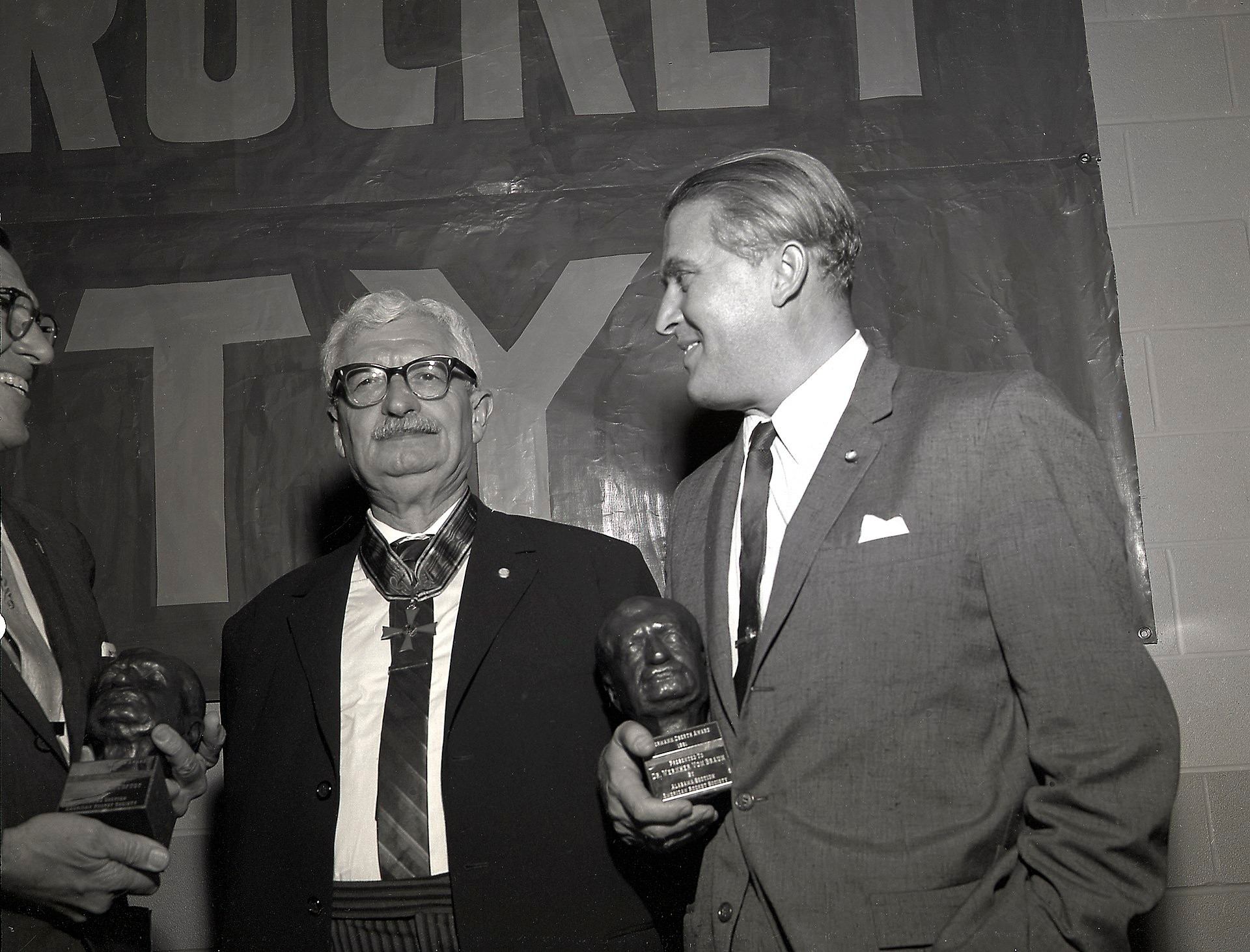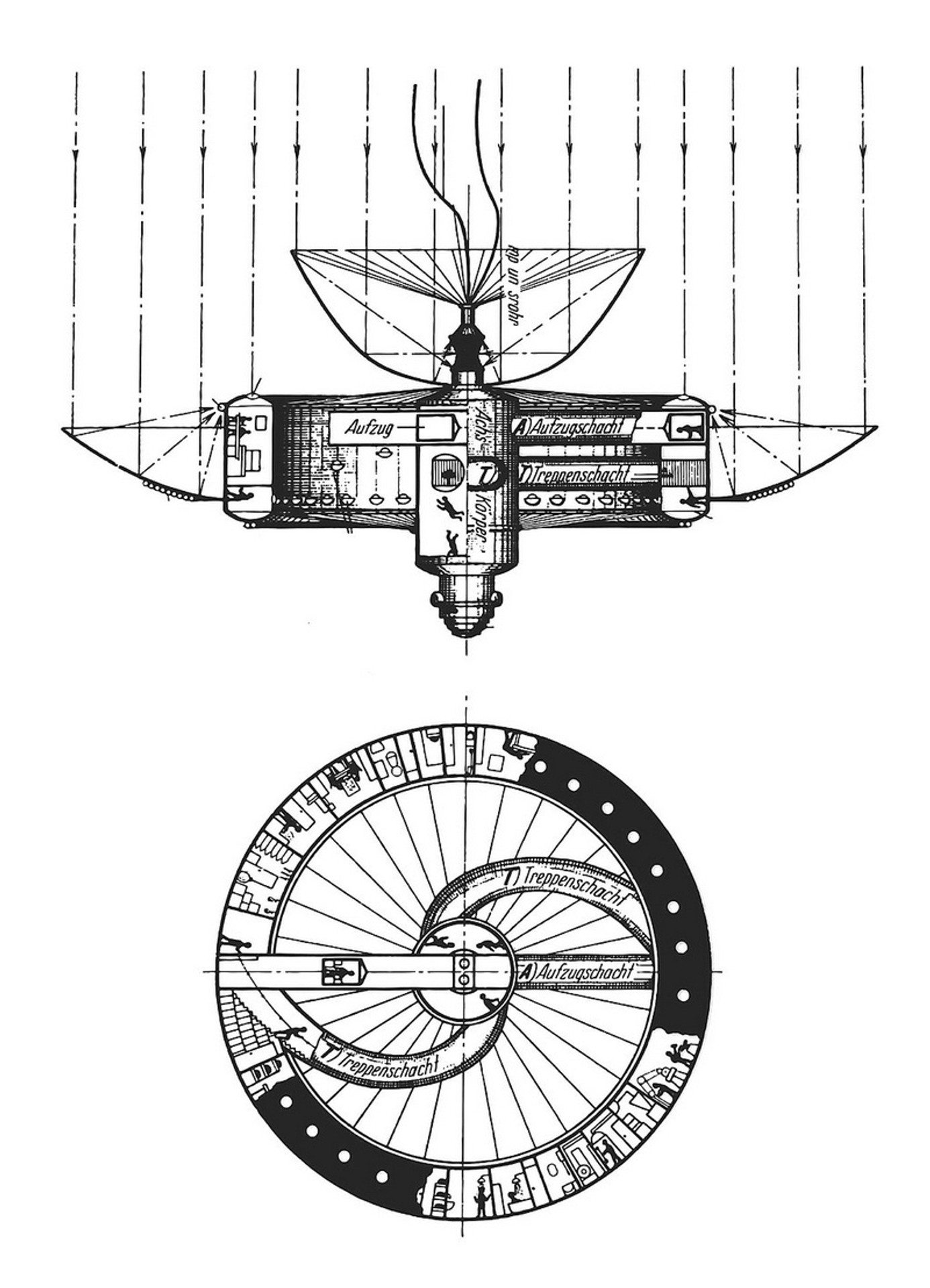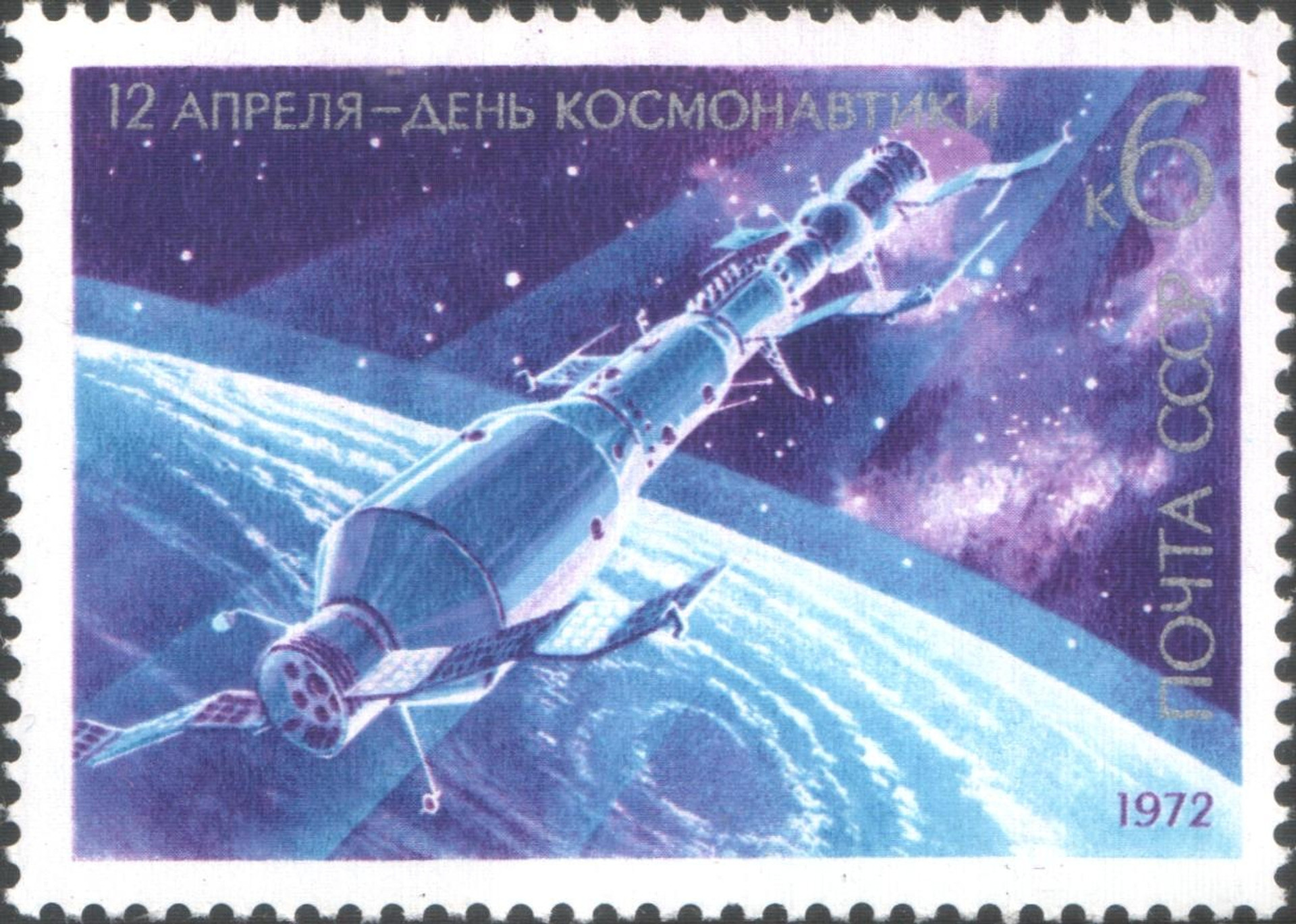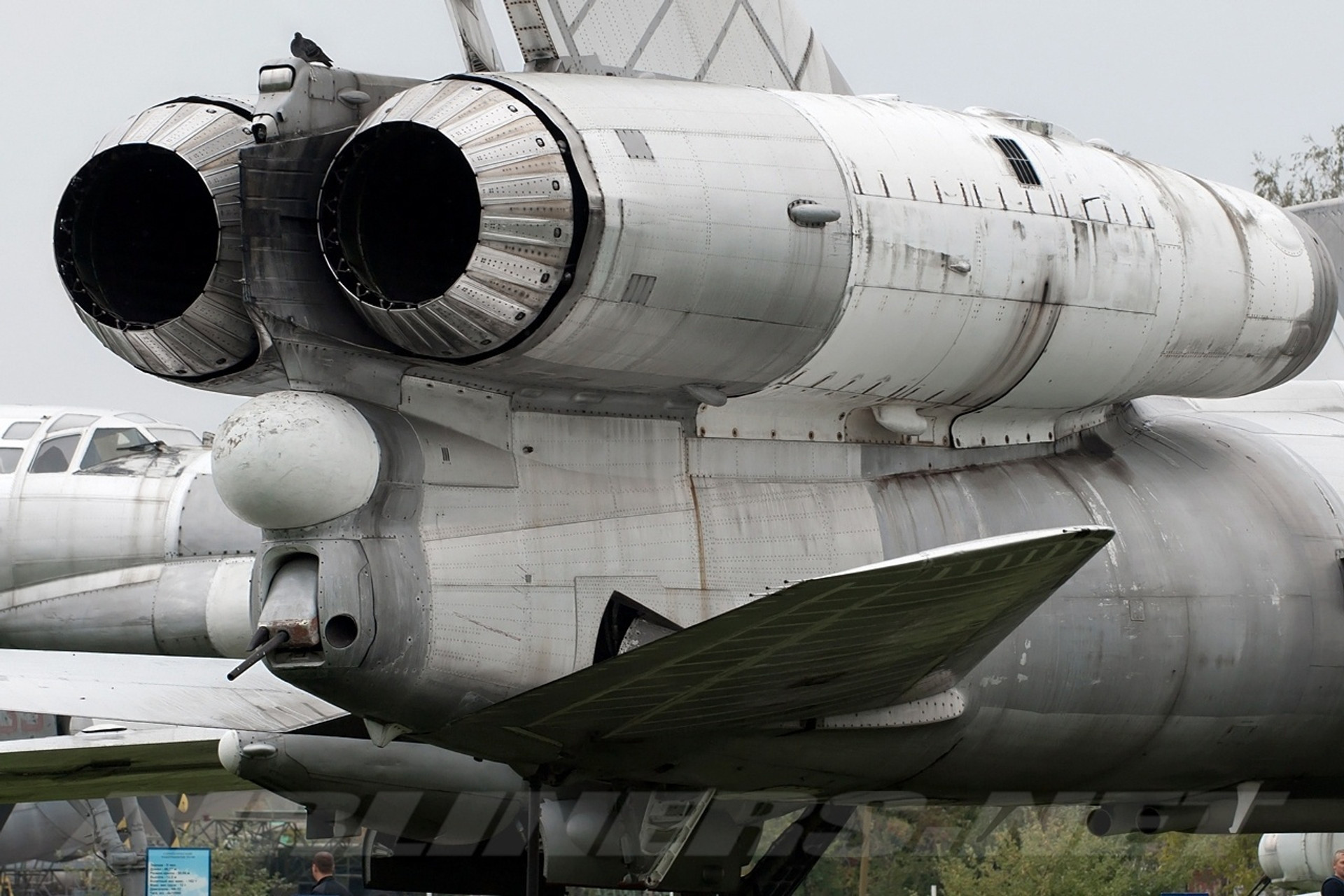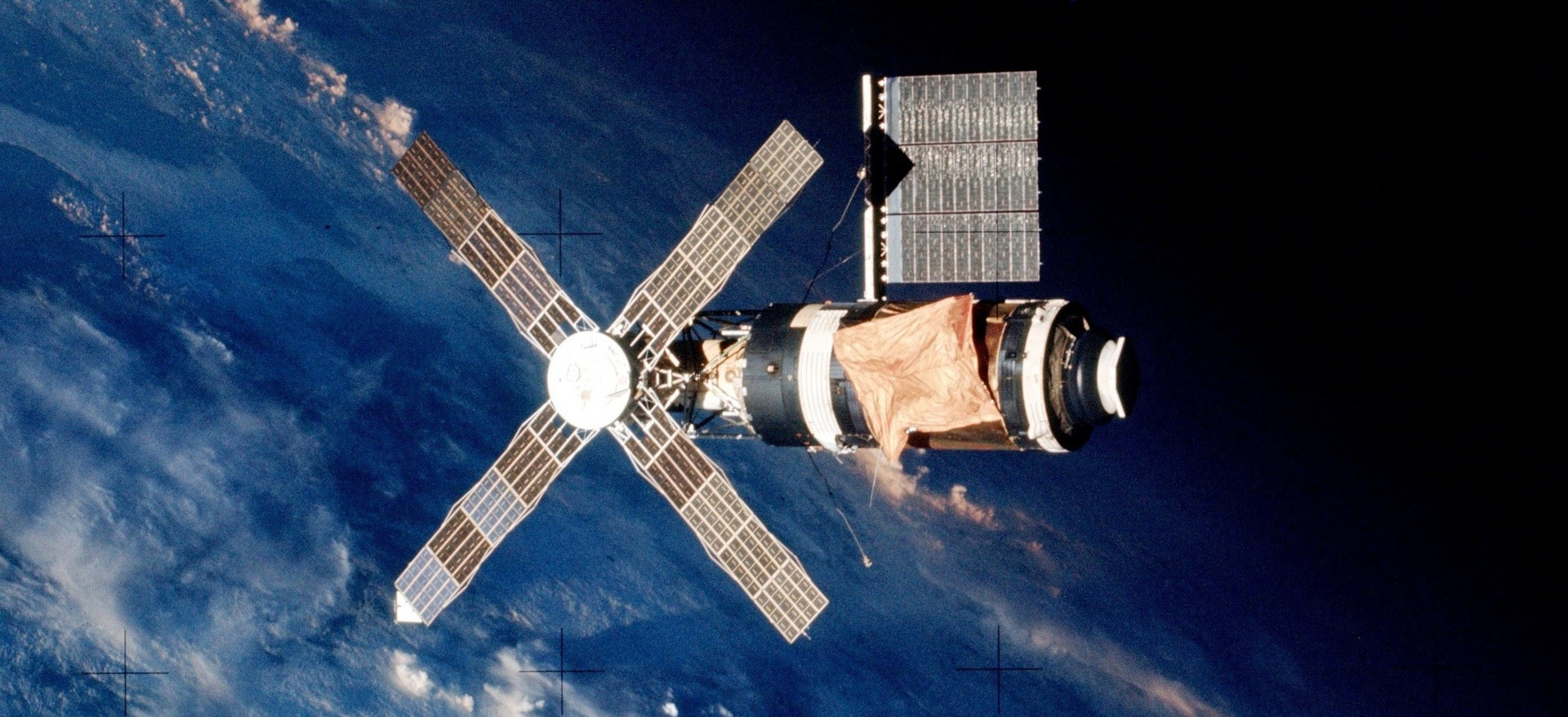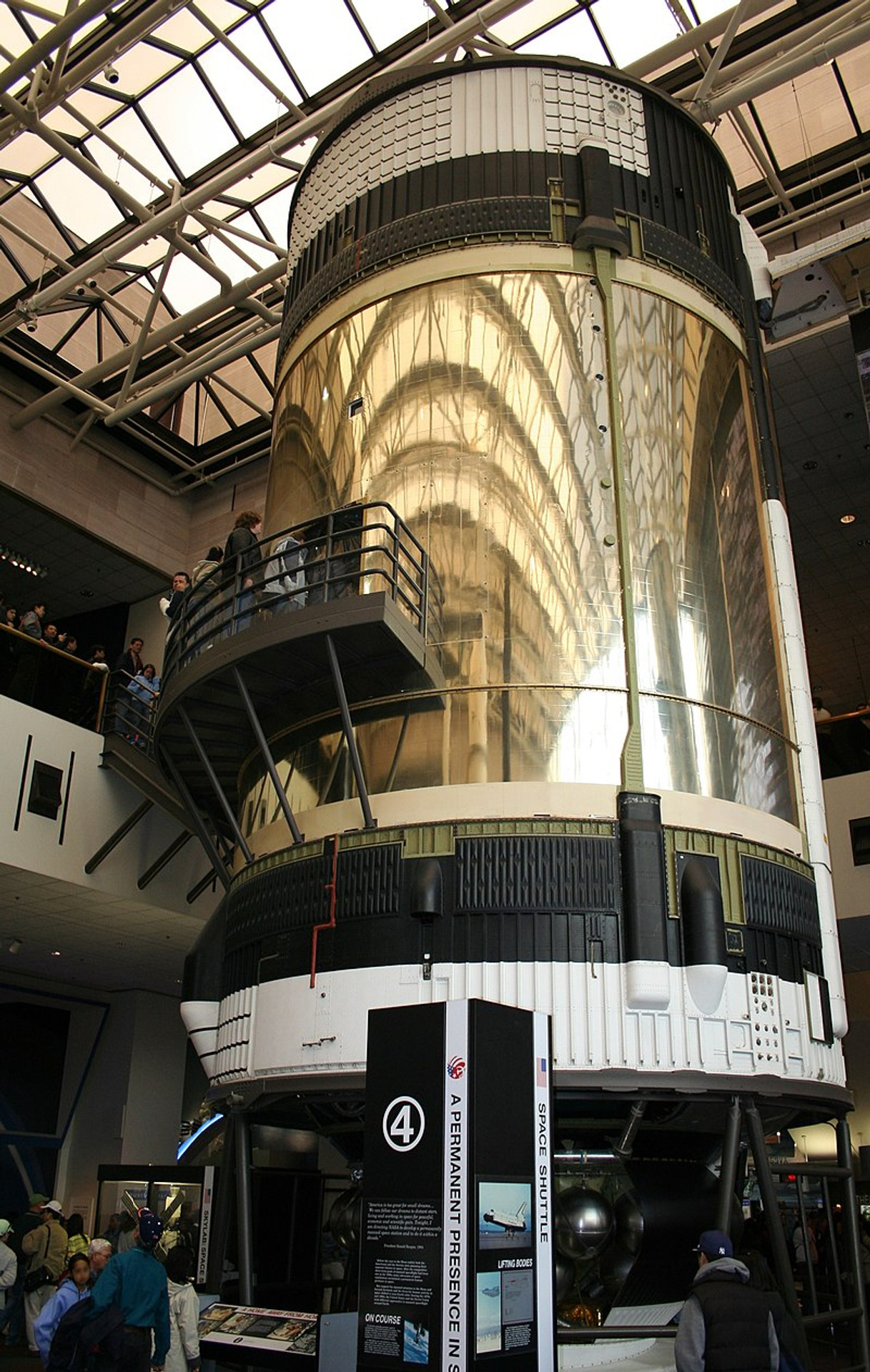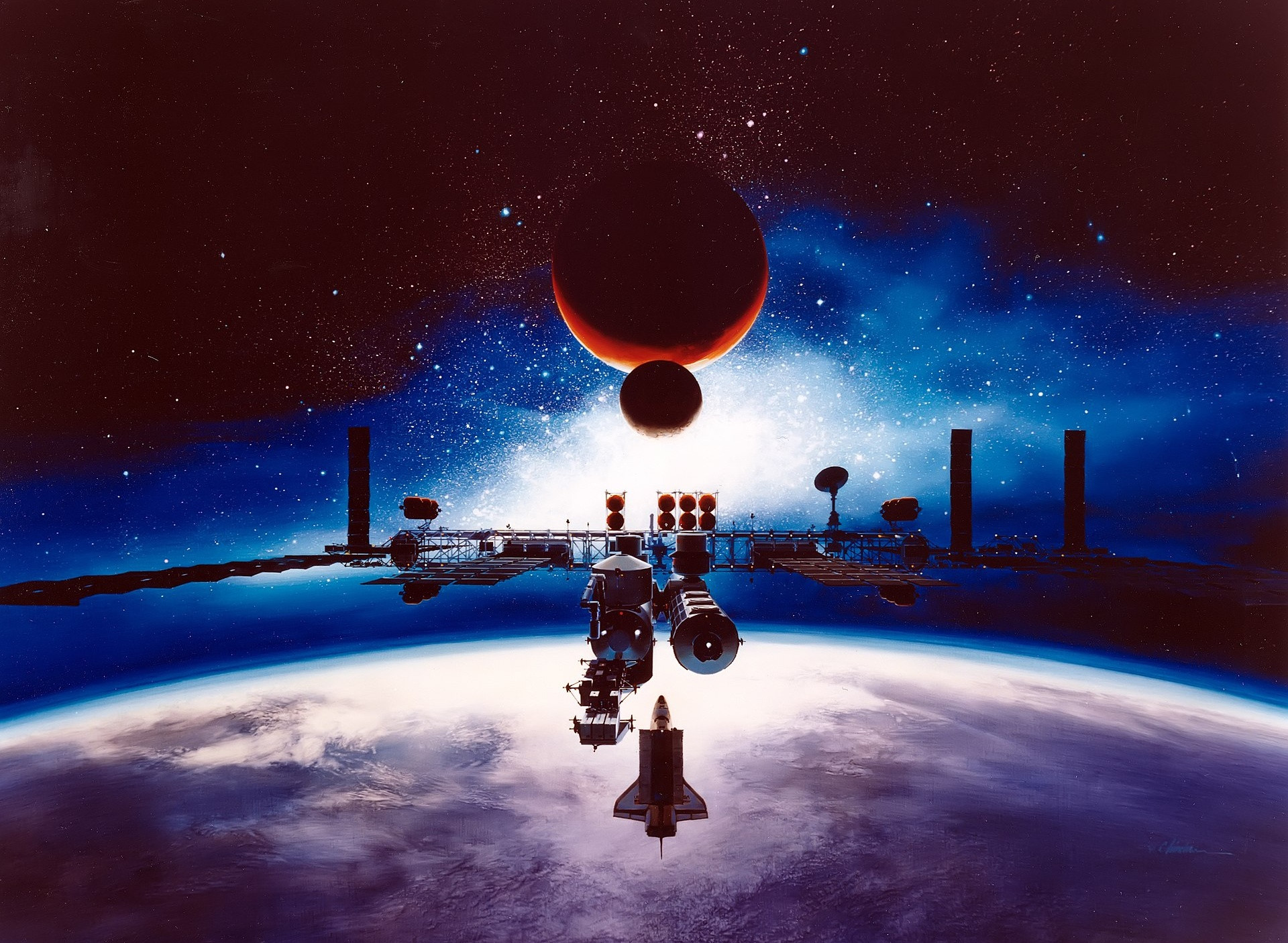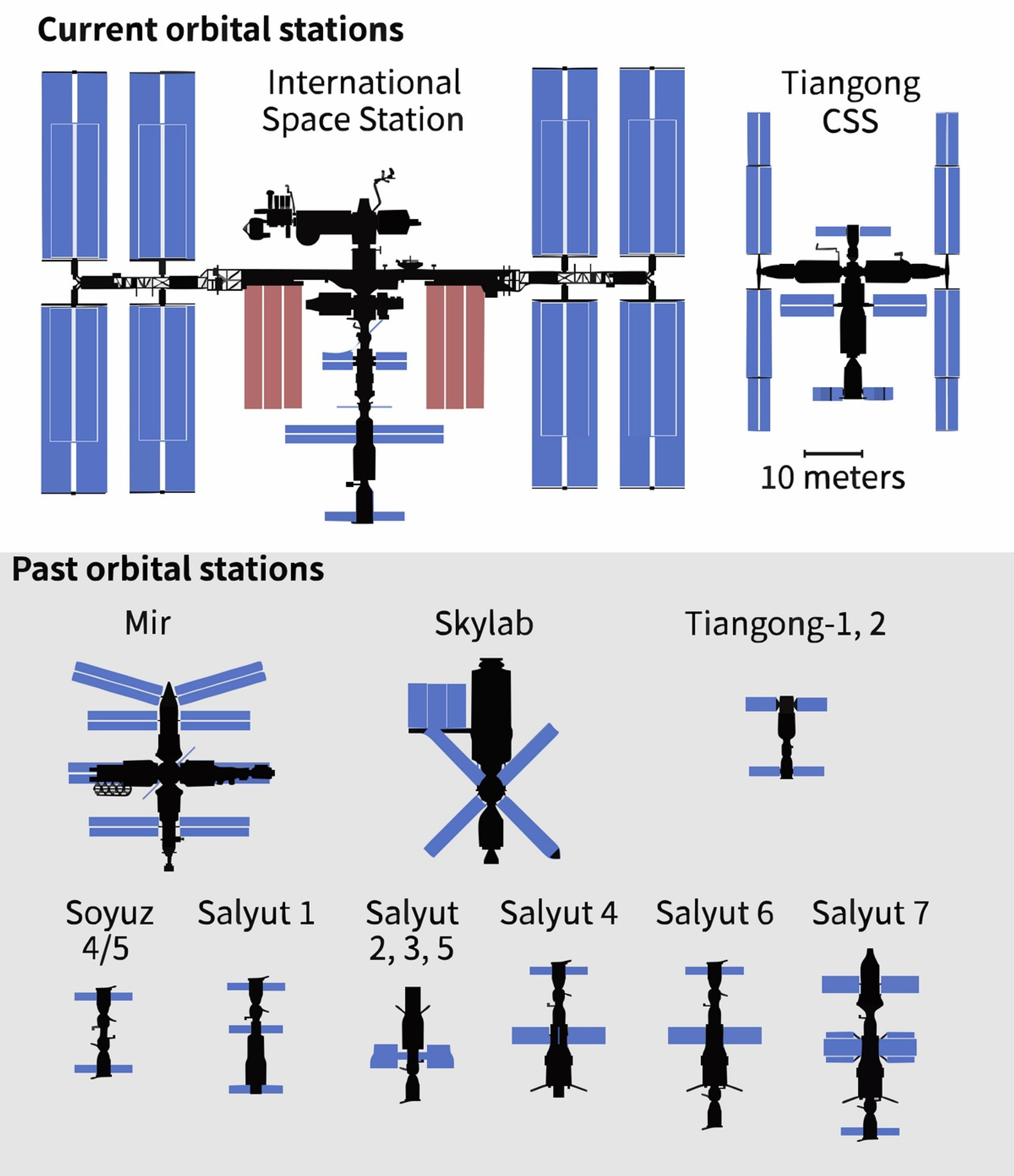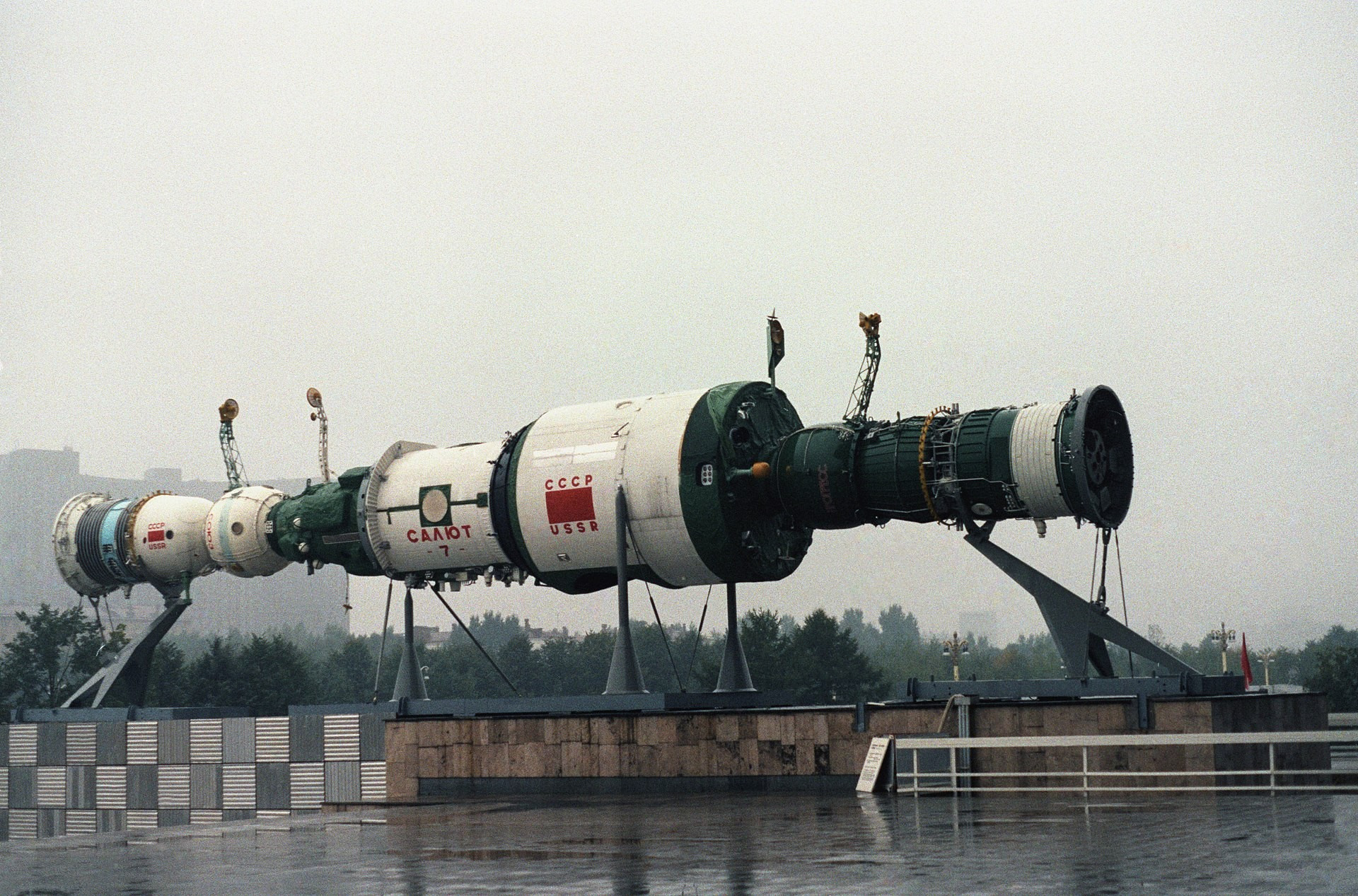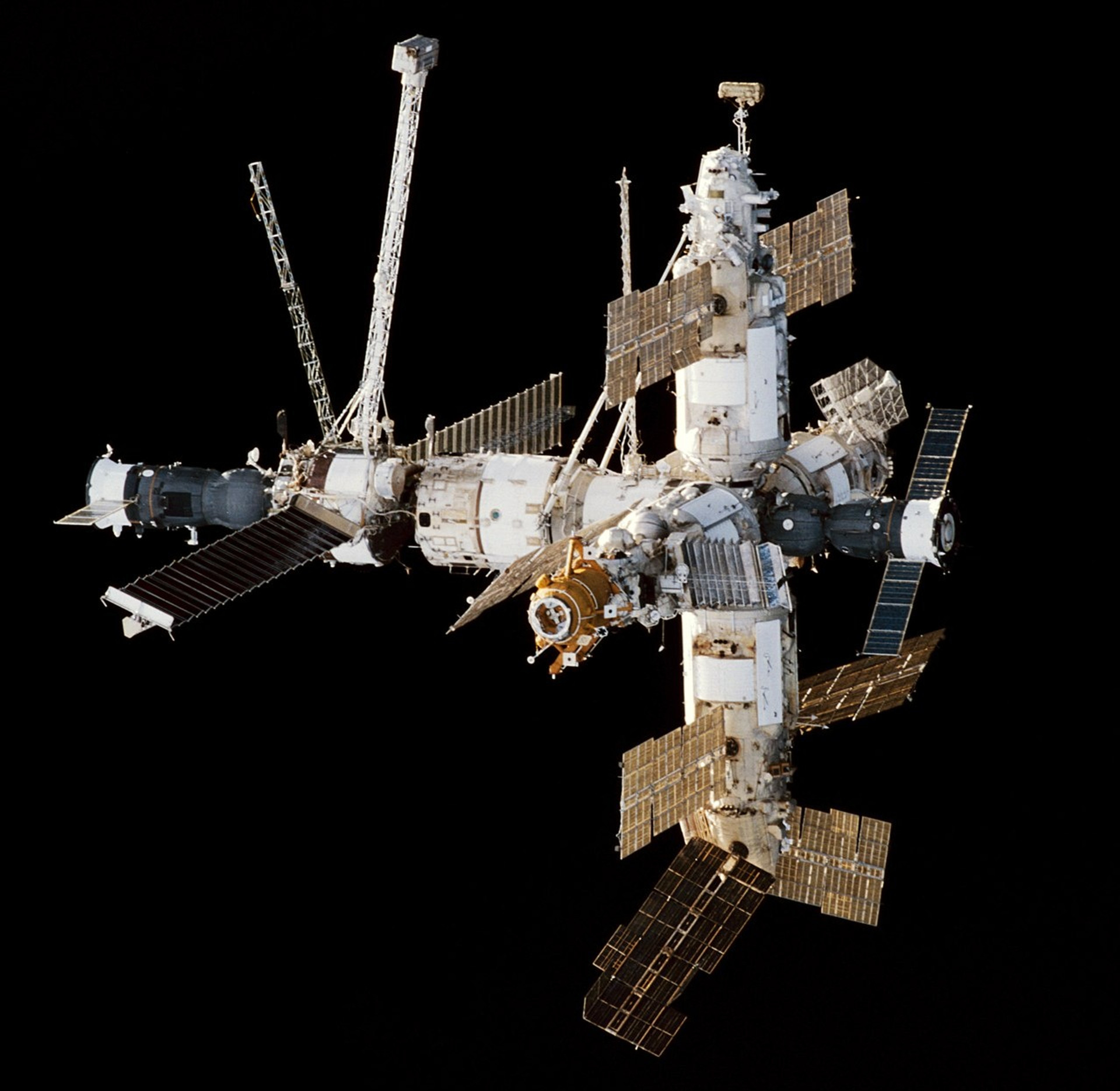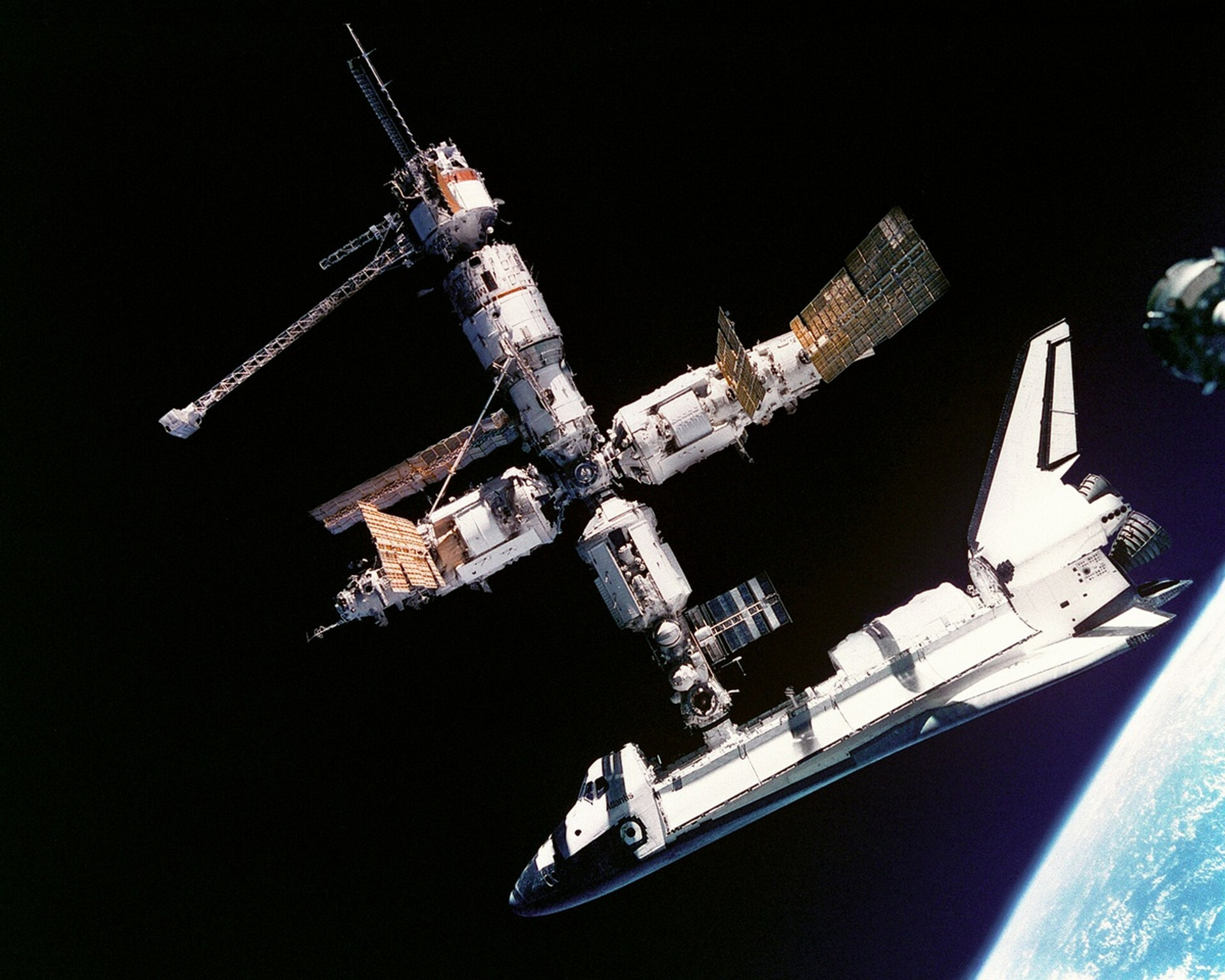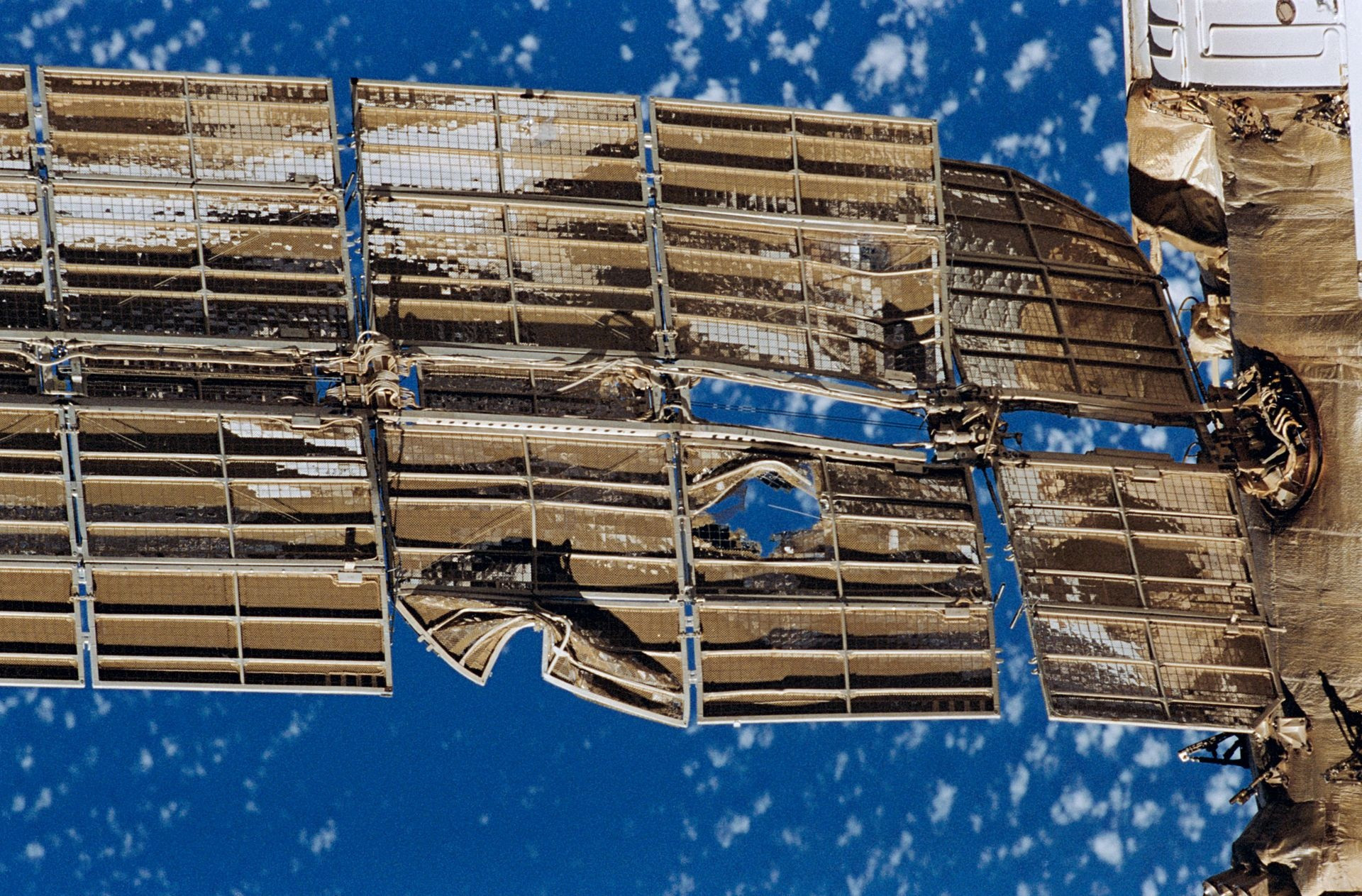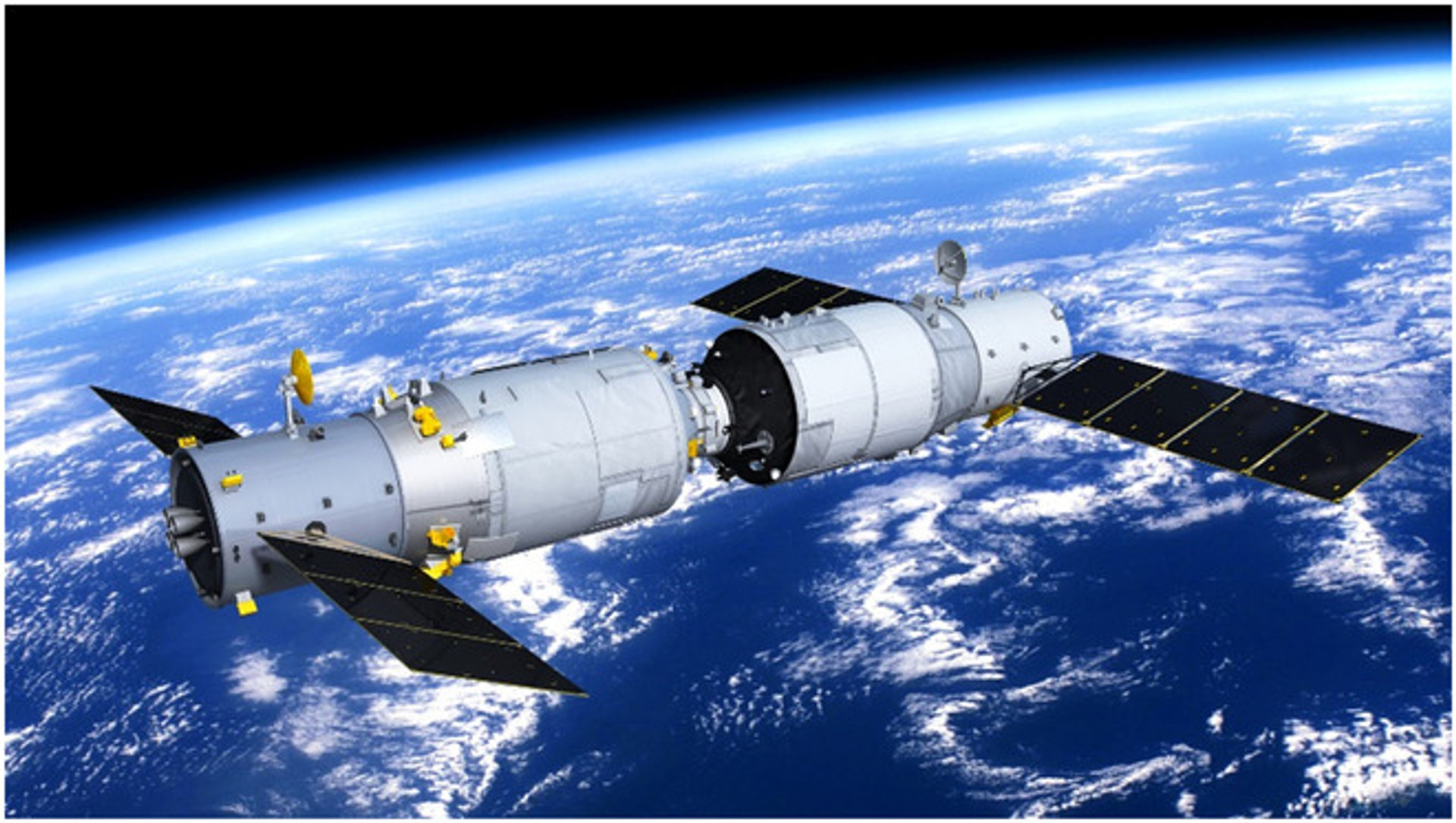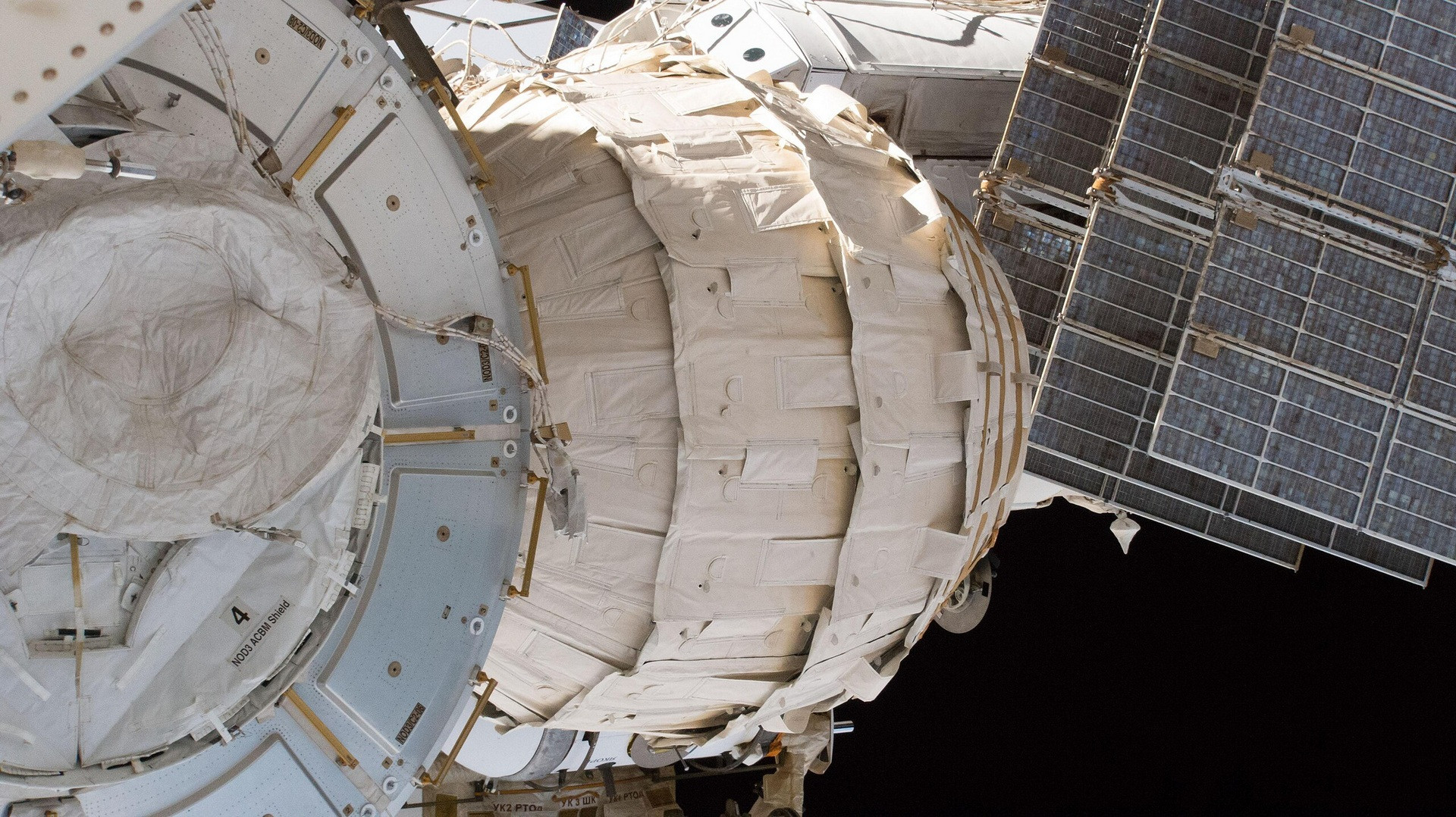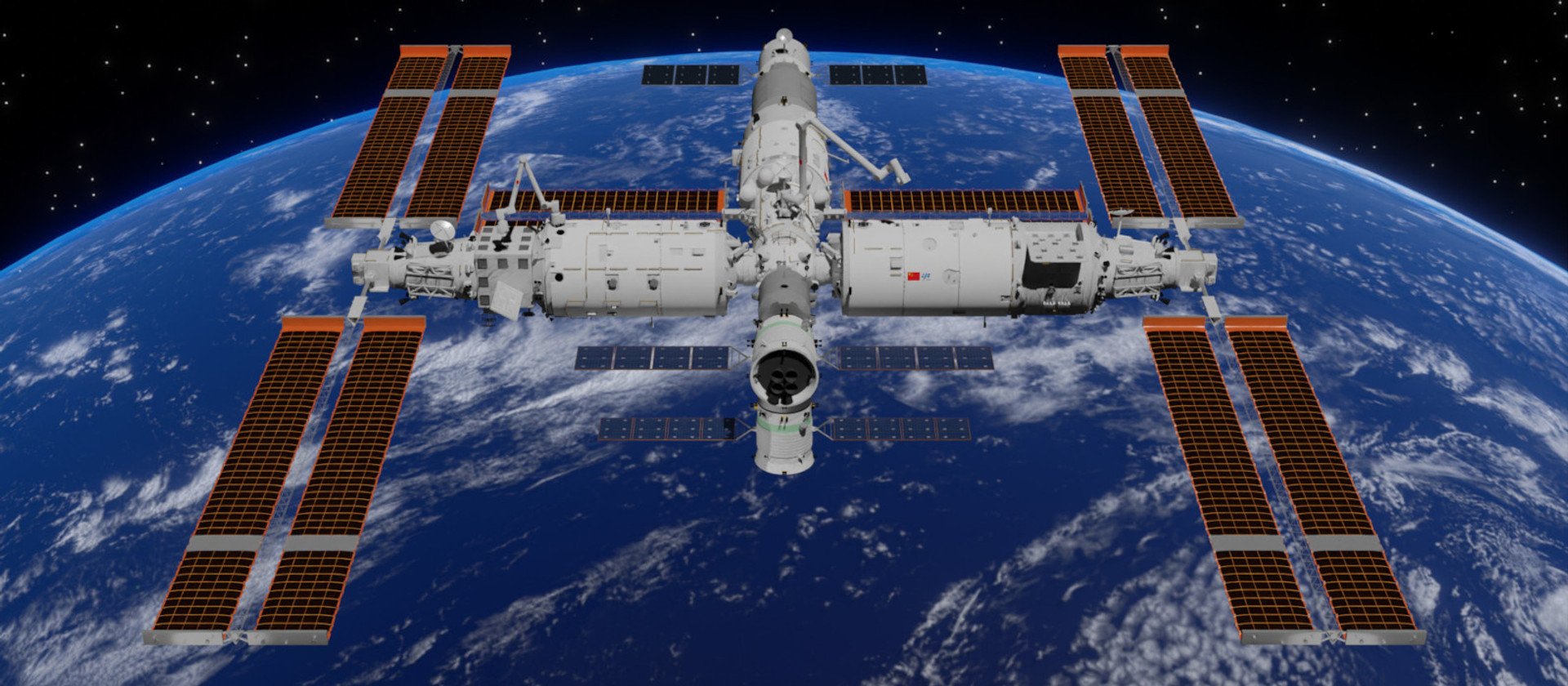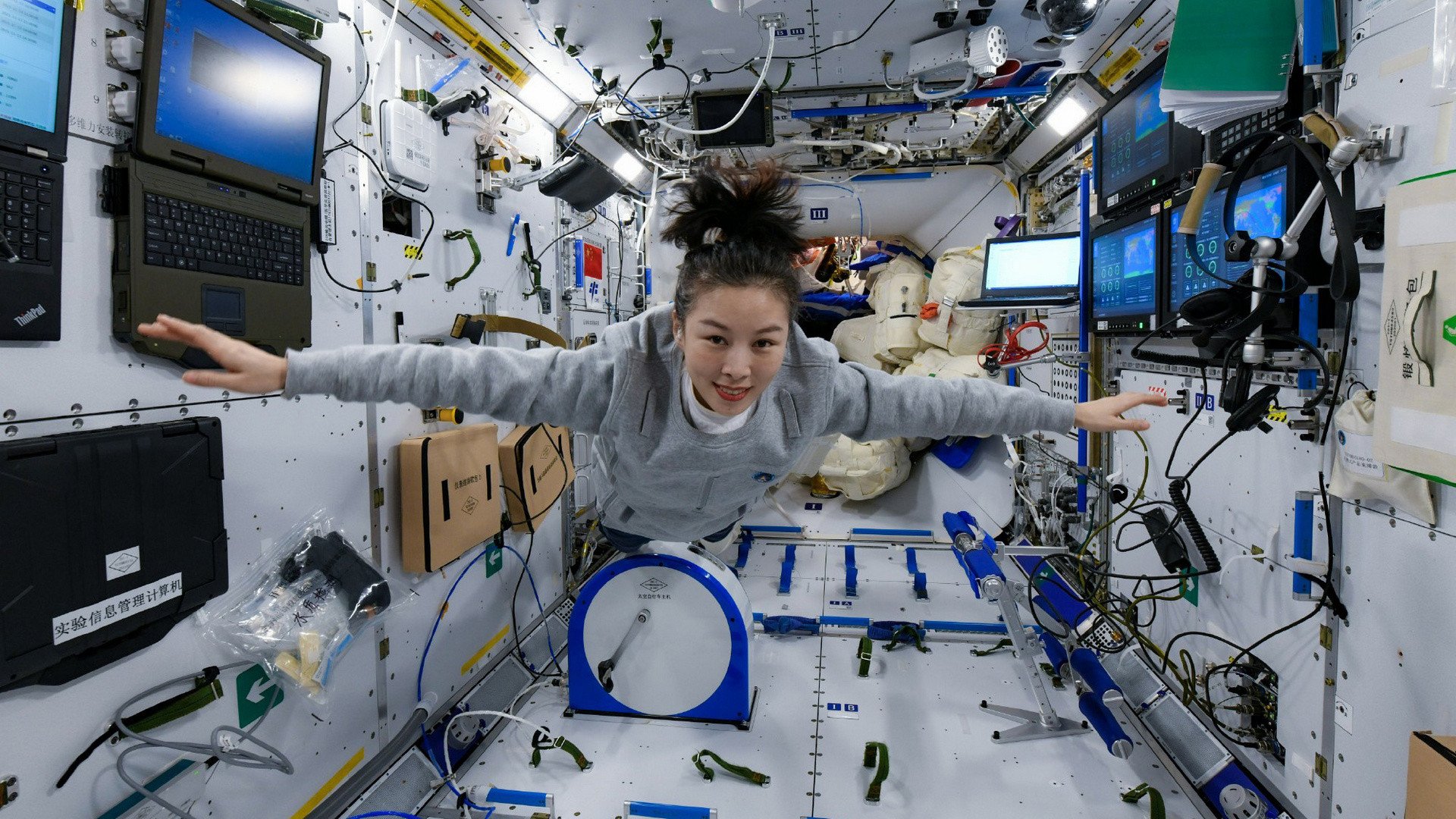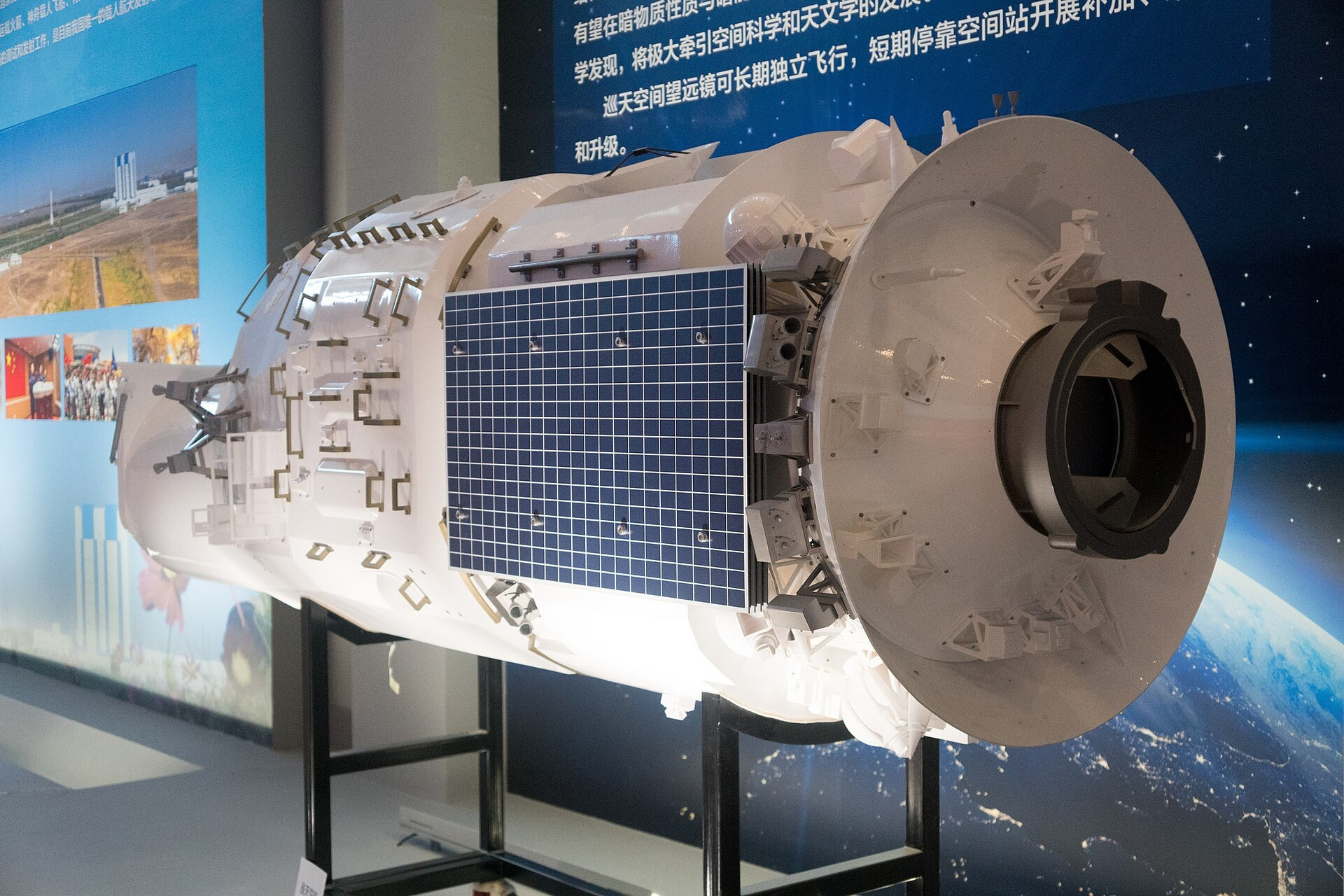The construction of the first module of the International Space Station "Zarya", based on the design of the functional cargo module for the Soviet station "Mir", began more than 30 years ago, in 1994. By the way, the Kharkiv plant "Khartron", which was responsible for the automatic docking system, also contributed to it. On November 20, 1998, the "Proton-K" carrier rocket delivered "Zarya" into space. Although this module was built by the Russians, it was funded by the United States, so it belongs to NASA. Two weeks later, on December 4, 1998, the shuttle Endeavour delivered the American Unity module from Boeing into orbit and the construction of the ISS began.
The next module, "Zvezda", was launched into orbit only on July 12, 2000 and docked with the other two on July 26, 2000. By the way, this module is even older, it seems that its construction began back in 1985, as the main module of the Mir-2 station, which was never created. On December 2, 2000, the first crew - William Shepherd, Yuri Gidzenko and Sergey Krikalyov - climbed aboard the International Space Station.
Over the past 25 years, the ISS has hosted 73 main expeditions and 16 visiting expeditions, totaling 230 people, plus 94 cargo ships. The International Space Station is a truly unique project, the most expensive object ever created by mankind - $150 billion in 2010, which is $219 billion in 2025 prices, even without taking into account support over the past 15 years. The station has allowed us to obtain a lot of useful scientific and technical information, test new technologies and processes, and study the effects of prolonged space travel on the human body, which is important for preparing future interplanetary missions. So it was definitely worth it.
Initially, the ISS was designed for only 15 years of operation, that is, until 2015. Since then, the mission duration has been extended many times, most recently until 2030. But the station's components are aging, and it is increasingly difficult to maintain them in proper condition, let's recall at least the constant air leak in the Russian Zvezda module, which began back in 2019. Considering the year in which this module was built, this is not surprising, it is already 40!
So the issue of terminating the operation of the ISS has long been no longer theoretical. NASA proposes to build a special ship to dismantle the station from orbit. In June 2024, it became known that the station will be built by SpaceX, which received a contract worth $ 843 million for the development and construction of a corresponding ship - the US Deorbit Vehicle. This will be an updated Cargo Dragon plus a large service module with 33 tons of fuel and 30 additional Draco engines - a kind of heavy space tug, which should controllably push the station to the bottom of the gravity well. NASA plans to dismantle the ISS from orbit in January 2031, although Elon Musk calls for this to be done as soon as possible, within the next two years.
In any case, the International Space Station is running out of time, and the natural question is what next? Will it be a new international project, or a series of private space stations, as planned under the NASA Commercial LEO Destinations program? Let's see what space agencies of different countries are planning in this area, and what private companies are offering. But first, as usual, a little history.
Space stations. Theory
It is believed that the concept of a space station was first voiced in the story of the American writer and clergyman Edward Everett Hale "The Brick Moon" (1869). Of course, it was a very primitive description, but it was a description of an artificial object that revolves around the Earth and should serve as a navigation aid. Yes, it was a kind of prototype of GPS, and the author even guessed that for correct navigation you need at least four satellites above the horizon.
More scientific and well-founded works on this topic were published in the 1920s by the Austro-German physicist and engineer Hermann Obert and the Ukrainian scientist Konstantin Tsiolkovsky. The scientist's ancestors were actually from Volhynia, they were distant relatives of Hetman Severyn Nalivayk, which Tsiolkovsky himself was supposedly very proud of. As for Hermann Obert, he was a member of the German Space Travel Society of Max Valier, about whom we have already written, and his student and assistant at one time was... Wernher von Braun, who was very impressed by the tests of Opel/Valier rocket planes and rocket machines. Hermann Obert worked with Braun first on the V-2 in Peenemünde, and then on the first intercontinental ballistic missile SM-65 Atlas in the USA.
As early as 1929, a project for a rotating space station to create artificial gravity appeared. Such ones can be seen in numerous fantasy works and films, but in reality they do not yet exist. The drawings appeared in the book by Hermann Potochnik (pseudonym Hermann Nordung) Das Problem der Befahrung des Weltraums. Der Raketen-Motor/"The Problem of Overcoming Space. The Rocket Engine", which was published in the year of the author's death.
And already in 1936, Alexander Belyaev's fantasy novel "The Star of the KETS" was published, the events of which take place on a space station named after Konstantin Eduardovich Tsiolkovsky. It was still 35 years before the appearance of the first real space station.
Space stations. Practice: Salyut, Almaz, Mir, Skylab, Tiangong
The world's first space station, Salyut-1, was launched into orbit by a Proton-K launch vehicle on April 19, 1971. According to Soviet mythology, the USSR was not interested in colonizing the Moon, so it supposedly focused on building space stations and long-duration flights. In reality, the USSR lost the race to the Moon and had a chance to lose the race to create a low-Earth station, because the American Skylab project was already under development, so it was decided to hastily create and launch something.
"Salyut-1" became this something. In fact, it is a kind of civilian modification of the military station of the "Almaz" project, on which cosmonauts-spies were supposed to observe NATO objects. The development of "Almaz" was delayed, so it was decided to launch "Salyut".
In fact, only after the collapse of the USSR did the general public learn that of the seven space stations of the Salyut program, only four were conditionally civilian, the other three - Salyut-2, Salyut-3 and Salyut-5 - were military. Moreover, they even had defensive weapons in case of "interest" from American satellites - a 23 mm turret aircraft gun R-23 of the A. A. Richter system, modified for use in space, known as the R-23M "Kartech". Test firings were even carried out from the gun on Almaz 101.2/Salyut-3 (guidance was carried out by rotating the entire station), which makes Salyut-3 the only known, as of now, combat spacecraft. Almaz 104, which was never built, was supposedly also to be armed with space-to-space missiles.
But let's get back to Salyut 1. The station spent 175 days in space and hosted two crews of three people, who spent only 24 days aboard.
The next launch under the Salyut program on July 29, 1972 was unsuccessful. Due to a malfunction in the second stage of the Proton-K launch vehicle, the station did not reach orbit and fell into the Pacific Ocean. As was Soviet custom, the failure was covered up and the station did not even receive its own name, so it is known as DOS-2 (Long-Term Orbital Station).
The United States lost the race to build space stations. The first American station, Skylab, was launched only on May 14, 1973. Skylab, built from the surplus third stage of the Saturn V lunar launch vehicle S-IVB, was simply gigantic compared to Salyut-1. 360 m³ of internal space versus 90-100 m³ for the Salyut series stations, two "floors", a shower cabin, separate, albeit small, crew cabins.
During launch, Skylab suffered some damage — the micrometeoroid shield, which was supposed to shield the station from the sun, failed to deploy properly, and one of the solar panels failed to deploy. So the first crew, which launched on May 25, 1973, was supposed to repair the station.
Skylab spent a total of 2,249 days in orbit and hosted three crews of three, who spent 171 days on the station. A number of interesting experiments were conducted on board, for example, the study of X-ray radiation from the Sun led to the birth of X-ray astronomy. Riccardo Giacconi received the 2002 Nobel Prize in Physics for this.
Unfortunately, NASA abandoned the Skylab program in favor of the Space Shuttle and the Freedom modular station, which the agency planned to build in the 1980s and 1990s. The fourth visit expedition, Skylab 5, which was supposed to take place in April 1974, was canceled. The second station, Skylab B, which was even built, was never launched. The last manned Apollo mission was the Apollo-Soyuz in 1975, and then the Americans stopped sending people into space for 6 long years, until the first launch of the Columbia shuttle on April 12, 1981.
The abandoned Skylab burned up in Earth's atmosphere on July 11, 1979. The descent was partially controlled, so some debris fell in Australia.
Let's go back to the Soviet Union. The next launch of the Salyut program, which took place on April 3, 1973, put Salyut-2 into orbit, which, let's recall, was actually a military Almaz 101.1. On the 13th day, the compartments were depressurized, on April 25, telemetry ceased to arrive, and on May 28, 1973, the station left orbit and fell into the Pacific Ocean near Australia. The expedition did not visit.
Salyut-3, launched three days before Skylab, on May 11, 1973, was also unlucky. After entering orbit, a malfunction in the orientation system caused uncontrolled engine starts and rotation of the station, and after all the fuel was used up, the station was doomed. According to Soviet custom, the failed launch was designated Kosmos-557. On May 22, 1973, the station deorbited.
The next station, which finally received the official name Salyut-3, although it was actually the military Almaz 101.2, was launched on June 25, 1974 and spent 213 days in orbit. During this time, there was only one visit — two military cosmonauts spent 15 days on the station, after the mission they tested the same space cannon mentioned above.
The next station, the conventionally civilian Salyut-4, spent more than two years in orbit, from December 26, 1974 to February 3, 1976. During this time, the station was visited by two expeditions, each with two cosmonauts. Another expedition, planned for April 1975, was aborted due to a Soyuz launch vehicle accident; the crew of the Soyuz-18A survived. In addition, the station was visited by the automatic Soyuz-20, a prototype of the future Progress cargo ships.
The Salyut-5 station, also known as Almaz 103, was also military. It spent 412 days in orbit (June 22, 1976 - August 8, 1977). There were three visiting expeditions, but one of them, on Soyuz-23, failed to dock, so only four cosmonauts visited the station. It was the last military reconnaissance station of the USSR, as it turned out that automatic reconnaissance satellites were easier and cheaper to use.
The Salyut-6 station (September 29, 1977 - July 22, 1982) was truly successful. It already had the main long-term expeditions, and visiting expeditions, and the use of the Progress and TKS cargo ships ("Transport supply ship" — a cargo/optionally manned ship that was to work with the Almaz series stations). The station spent 1764 days in orbit, 683 of which it was inhabited. In total, Salyut-6 was visited by 16 crews of 33 cosmonauts and 14 cargo ships. The longest expedition was 185 days, Leonid Popov and Valery Ryumin. It was on Salyut-6 that the Soviet Union began to collect unique information on long-term human stays in space.
The last monoblock station was Salyut-7, which was in orbit from April 19, 1982 to February 7, 1991. Most of the time in unmanned mode, because starting in 1986, the USSR began operating the next station — the modular Mir. Salyut-7 hosted 10 expeditions and 15 cargo ships, 22 cosmonauts visited it, which, among other things, set another record for the duration of stay in space. The crew of Kizym/ Solovyov/Atkov spent 237 days in orbit.
Unlike the stations of the Salyut/Almaz series and the American Skylab, which were single-volume (conditionally, the military supply ship of the TCS can be considered a separate module, but very conditionally), Mir consisted of 7 modules at the last stage of its existence. This is what the American Freedom was supposed to be like, but this project was postponed and postponed, although the Space Shuttle program was created not least precisely for the sake of building an orbital station.
Construction of Mir began on February 20, 1986, when the Proton-K launch vehicle launched the station's Base Module, which was based on the Salyut base module. Recall that Zvezda, the main module of the International Space Station, is DOS-8 aka Mir-2, so yes, the ISS is based on Salyut technology, that is, 50-year-old technology.
On April 12, 1987, the astrophysical module "Kvant" docked to Mir. On December 6, 1989, the scientific and gateway module "Kvant-2". On July 10, 1990, the docking and technological module "Krystal". On June 3, 1995, the research module "Spektr". On November 15, 1995, the docking module for shuttles was added to the station, which was delivered by the shuttle Atlantis.
The Americans joined the operation of Mir primarily in order to gain experience for the construction of the ISS and to involve the Russians and their achievements in it. In the issues of long-term flights and the construction of space stations, the USSR and Russia, which imitated the space achievements of the Soviet Union, were indeed significantly ahead of the USA.
Cooperation on the ISS and the Shuttle-Mir program began in 1993. On February 3, 1994, the first Russian flew on the shuttle, and on March 14, 1995, the first American on the Soyuz. Unfortunately, this cooperation is still ongoing. The first docking of the shuttle Atlantis with the Mir station took place on June 27, 1995, and a little later, the same Atlantis brought a docking module to the station that was more convenient for shuttles. In total, 12 missions were carried out within the Shuttle-Mir program, including long-duration flights by several US astronauts.
The last, seventh module of "Mir" — the scientific and research "Pryroda" — was docked to the station on April 26, 1996. Kharkiv-based "Khartron" was involved in the development of almost all "Mir" modules, its specialists were responsible for the control system.
Most of the time, Mir, which was in orbit from February 19, 1986 to March 23, 2001, was inhabited. The station was visited by 125 people during 39 manned missions and 68 cargo ships. Interestingly, despite the large number of modules, Mir was inferior to the old Skylab in terms of sealed volume - 350 m³ versus 360 m³.
A record number of scientific experiments were conducted on the station – 23 thousand. Cosmonaut Valery Polyakov in 1995 set a record for continuous stay in space – 438 days, which has not been broken to this day. In 1997, the station survived a fire and a collision with the cargo ship "Progress M-34".
"Mir" was continuously inhabited for almost 10 years in a row — from September 5, 1989 to August 28, 1999. Already in 1998, the old station began to be prepared for decommissioning, but the deorbiting process was delayed because private investors appeared, allegedly wanting to extend the life of "Mir".
The MirCorp corporation found money and financed another manned one – "Soyuz TM-30" (April 4, 2000 – July 16, 2000) and another cargo flight to the station. The station was reactivated and they tried to repair it and turn it into… an orbital film studio. We will not show you exactly what films were going to be shot in space, of course. And no, this is not hardcore porn, but much worse – this is Russian cinema.
Fortunately, Mir was no longer operational, and MirCorp had run out of money. On March 23, 2001, the station was deorbited and submerged in the Pacific Ocean. By this time, the ISS already had four modules and the second expedition was working on the new station.
But before we move on to modern stations, it is worth mentioning the two Chinese test stations Tiangong-1 and Tiangong-2, which were in space from September 29, 2011 to April 2, 2018 and from September 15, 2016 to June 19, 2019, respectively.
Tiangong-1 and Tiangong-2 were prototypes of the core module of the future Tiangong space station, as well as test platforms for developing rendezvous and docking procedures. Both stations had a meager sealed volume — only 15 m³ compared to 90–100 m³ for the Salyut stations of various modifications. The test stations can be compared in size, mass and volume with the Chinese manned ships of the Shenzhou series, which, in turn, are variations on the theme of the Soviet Soyuz.
However, Tiangong-1 and Tiangong-2 hosted three expeditions consisting of 8 taikonauts, who spent a total of 51 days on them. In addition, two cargo ship dockings took place. The necessary information was collected, and the PRC began developing a full-fledged modular space station.
Space stations. Modern: ISS, Genesis, Tiangong
Currently, there are two large modular stations operating in Earth orbit – the International Space Station (mass 450 tons, volume 1,005 m³) and the Chinese Tiangong (mass 100 tons, volume 340 m³).
Plus, there are two experimental inflatable modules, Genesis I (launched July 12, 2006) and Genesis II (launched June 28, 2007), from Bigelow Aerospace, which are based on the NASA TransHab concept from the 1990s. The modules' equipment transmitted data for 2.5 years, although the missions were designed for only half a year. Unfortunately, as of 2020, Bigelow Aerospace has effectively ceased operations, although their inflatable module, the Bigelow Expandable Activity Module (BEAM), still remains on the ISS. BEAM was docked to the Tranquility module back in 2016, so this "connection" is almost 10 years old.
We wrote about the significance and current state of the International Space Station at the beginning of the article, besides, the ISS is constantly in the news, so there is no point in writing about it further. However, there is much less information about the Chinese Tiangong station, and there are almost no high-quality photos.
Tiangong (it was decided not to assign the number 3 to this station) is based on the same experiments with Tiangong-1 and Tiangong-2 and the experience of building the Mir station. Even in terms of size, mass, and internal volume, Tiangong is close to Mir – 129,700 kg and 350 m³ for Mir, 100,000 kg and 340 m³ for Tiangong.
Construction of Tiangong began with the launch of the Tianhe base module on April 29, 2021. By and large, Tianhe repeats the configuration and functionality of the Mir base module, so… yes, the same Salyut/Almaz. On May 29, 2021, the Tianzhou 2 cargo ship docked with the station, and on June 17, 2021, the first expedition arrived on the Shenzhou 12 ship, the design of which is based on the Soviet Soyuz. Since then, visits to the station have become regular.
In 2022, Tiangong received two additional modules – the laboratory modules Wentian (July 24, 2022) and Mengtian (October 31, 2022), both based on the design of the Tiangong-2 stations. Tiangong has two robotic arms, and the station's docking nodes closely resemble the APAS-89/APAS-95 docking nodes used on the ISS.
Tiangong has already been visited by 9 expeditions and 8 cargo ships, 27 taikonauts spent 1436 days on the station. In terms of occupancy/uninhabitedness, Tiangong confidently holds first place. In the future, the PRC plans to invite astronauts from other countries to the station, of course, by analogy with the Soviet "Intercosmos" only those who are needed by China. A kind of space diplomacy. Apparently, the first foreigner on board Tiangong should be a Pakistani.
The China Manned Space Agency (CMSA) plans to expand the Tiangong station to 6 modules. The new modules should be improved versions of Tianhe, Wentian and Mengtian and will mirror them, that is, the station will remain symmetrical. The total mass of Tiangong in this case will be about 180 tons. The new section should include an observatory, another robotic arm, 3D printers and much more. The planned lifespan of the station is 15 years, that is, until at least 2036.
And the next "module" of Tiangong should be the Xuntian space telescope, a kind of Chinese Hubble, but better and built on modern technologies. At the same time, Xuntian will not be docked to the station, but will be in the same orbit, but with different phasing, which will make it possible to visit the telescope from time to time, or even dock it to the station for maintenance and refueling. Xuntian should go into space in 2026.
As you can see, China has not been lagging behind for a long time, and after the ISS is decommissioned, the Chinese Tiangong may remain the only space station in Earth's orbit. So next time, let's look at what space agencies of different countries and private companies are offering as an alternative. Including within the framework of the NASA Commercial LEO Destinations program initiative.


